With the KFA2 GeForce RTX 3080 Ti, I’m happy to fulfill the desire to once again test a single card that isn’t at the very top of its already hefty price range within its performance class. At currently less than 1150 Euros, it is already back in rather “normal” regions, because just under a year ago we were already at just under 1800 Euros and the RRP is being approached again everywhere. That alone (and the fact that Ada will probably only be on the shelves in late fall) makes a single test quite interesting. And I know quite a few who are still thumbing their noses at all the mining price victims with their RTX 2080 Ti, myself included.
And what else? This graphics card also has the usual GeForce feature set of the current Ampere generation. The heart of the GeForce RTX 3080 Ti is the GA102-225 graphics processor. It is based on Samsung’s 8 nm process node developed especially for NVIDIA and has a total of 28 billion transistors. We already know him from last year. It measures just under 628 mm², making it the second largest gaming GPU ever produced just below the Turing TU102 GPU.
For the GeForce RTX 3080 Ti, NVIDIA has after all enabled 80 SM units on its flagship, resulting in a total of 10240 CUDA cores. In addition to CUDA cores, NVIDIA’s GeForce RTX 3080 Ti is also equipped with next-generation RT (ray tracing) cores, Tensor cores, and the new SM or streaming multiprocessing units. As for memory, the GeForce RTX 3080 Ti is equipped with 12 GB of GDDR6X memory, which can deliver memory speeds of 19.0 Gbps. Together with a 384-bit interface, this will deliver a cumulative bandwidth of 912.4 Gbps.
And yes, there are even accessories for the card that are a small step ahead of the Founders Edition, at least from the manufacturer’s and its marketing point of view. This includes an RGB-lit graphics card holder, but it requires an old 12V RGB connector with four preci dips, and a rear-mounted pull fan, which is great for cooling in poorly ventilated cases and is co-controlled by the card.
Optics and haptics
The design language is the same as always, so it’s not new. The black plastic cover looks plain, you can really like that because it is rather timeless after all. The KFA2 GeForce RTX 3080 Ti SG 12GB weighs 1375 grams and is thus hardly heavier than the reference card. It is also longer with its full 31.5 cm, a pleasant 10.5 cm high (installation height from PEG) and in addition 5.5 cm thick (2.5 slot design), whereby a backplate and the PCB are added with a total of five more millimeters.
The graphic brick including illumination is supplied via two standard 8-pin sockets, so everything is as known and used when a card has a power limit of 350 watts (optionally up to 380 watts). This has the advantage that you can simply save the third cable, which we know from many other models. Yes, it’s already close, especially at maximum OC, but not above specs. We can also see the vertical alignment of the cooling fins and the board reinforcement in the form of a backplate and a frame in the slot bezel area here. Three 9 cm fans (8.7 cm rotor blade diameter) provide the necessary fresh wind for cooling, but the rather out-of-round openings of the cover don’t make sense aerodynamically, rather the opposite. But we’ll get to that later.
The slot bracket is decoratively perforated, carries 1x HDMI 2.1 and three current DP 1.4 ports. However, the USB Type C port is missing. More about the construction, the cooler and the assembly will follow shortly, because the disassembly in the form of the extensive teardown is virtually mandatory for an objective article.
Technology
While the base clock is specified at 1365 MHz, the boost clock is 1695 MHz (FE at 1665 MHz), which is even reached. The card relies on 12 GB GDDR6X at 19 Gbps, but we’ve already covered that. The rest of the key data can be found in the GPU-Z screenshot…
… and the tabular overview (where the values of NVIDIA’s RTX 3080 Ti FE have been put in brackets).
| GeForce RTX 3070 | GeForce RTX 3080 | GeForce RTX 3080 Ti |
GeForce RTX 3090 | |
|---|---|---|---|---|
| GPU | GA104-300 | GA102-200 | GA102-225 |
GA102-300 |
| Process Node | Samsung 8 nm | |||
| The Size | 395.2 mm2 | 628.4 mm2 | ||
| Transistors | 17.4 billion | 28 billion | ||
| CUDA Cores | 5888 | 8704 | 10496 | |
| TMUs/ROPs | TBA | 272 / 96 | 320/112 |
TBA |
| Tensor/RT | 184 / 46 | 272 / 68 | 320 / 80 | 328 / 82 |
| Base clock |
1500 MHz | 1440 MHz | 1365 MHz |
1400 MHz |
| Boost clock |
1730 MHz | 1710 MHz | 1695 (1665) MHz |
1700 MHz |
| Memory | 8 GDDR6 | 10 GB GDDR6X | 12 GB GDDR6X | 24 GB GDDR6X |
| Interface | 256-bit | 320-bit | 384-bit | 384-bit |
| Throughput | 14 Gbps | 19 Gbps | 19 Gbps |
19.5 Gbps |
| Bandwidth | 448 Gbps | 760 Gbps | 912.4 Gbps |
936 Gbps |
| TGP | 220W | 320W | 350 W |
350W |
| Launch | 15.10.2020 | 17.09.2020 | 02.06.2021 |
24.09.2020 |
KFA2 GeForce RTX 3080 Ti SG (1-Click OC), 12GB GDDR6X, HDMI, 3x DP (38IOM5MD99DK)
- 1 - Introduction, Unboxing and Specs
- 2 - Test System and Methods
- 3 - Teardown: PCB Analysis, Components and Cooler
- 4 - Gaming Performance
- 5 - Gaming Efficiency and Power Draw
- 6 - Power Consumption in Detail and Standards
- 7 - Transients and PSU Recommendation
- 8 - Temperatures and Clock Rates
- 9 - Fan Curve, Fan Speed and "Noise" Analysis
- 10 - Summary and Conclusion














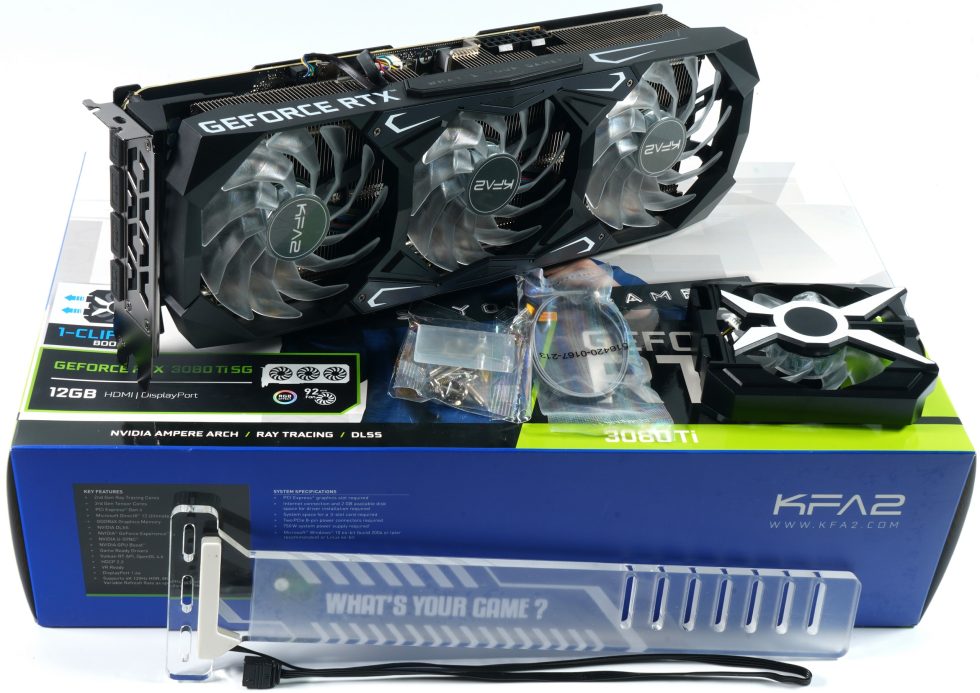
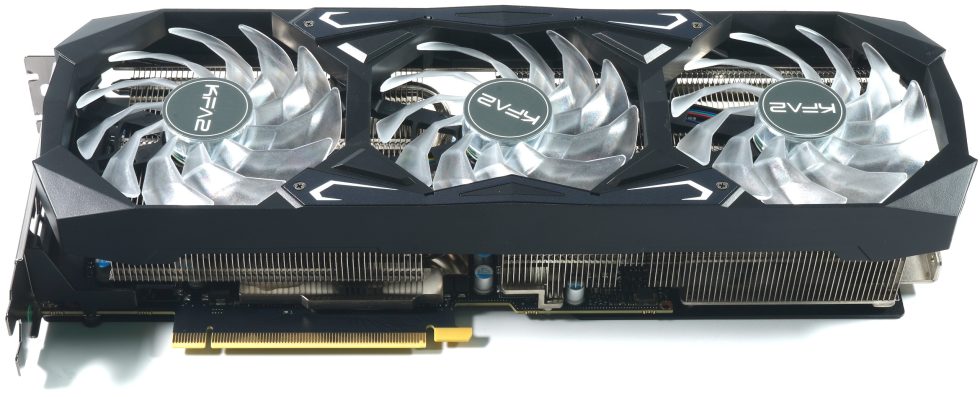
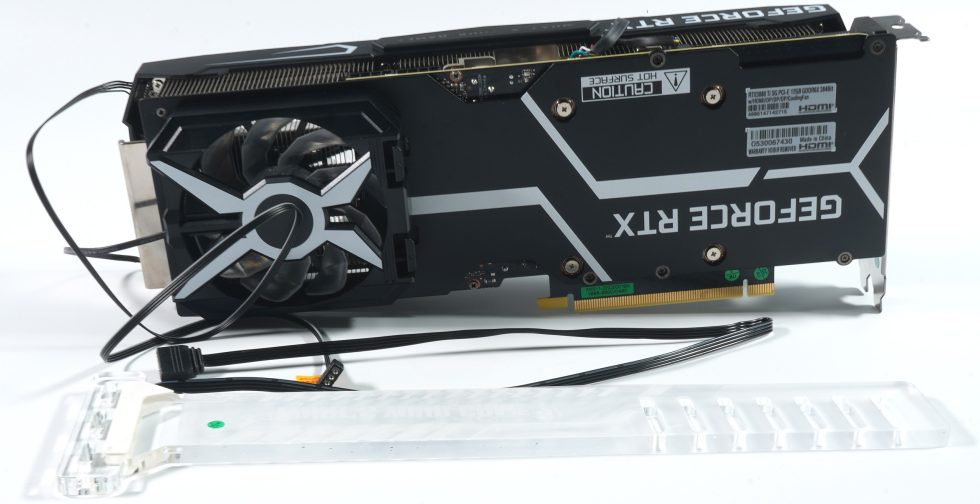


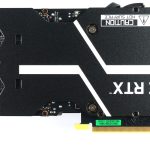
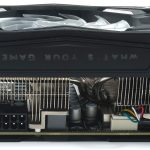
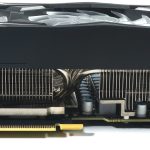
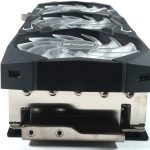
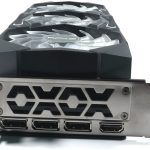
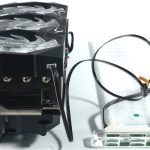
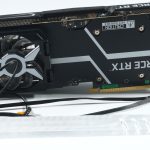
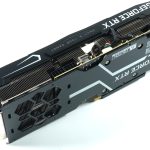
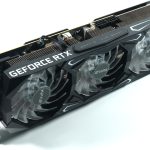
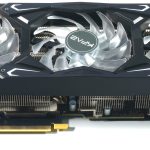

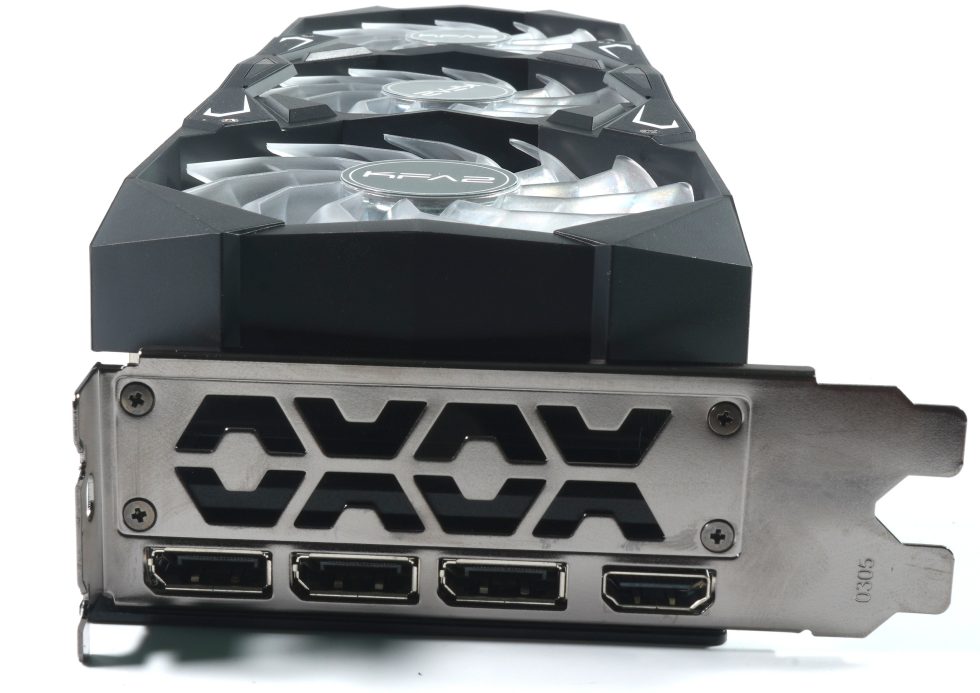




















5 Antworten
Kommentar
Lade neue Kommentare
Veteran
Mitglied
Mitglied
Mitglied
Veteran
Alle Kommentare lesen unter igor´sLAB Community →